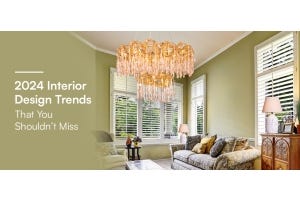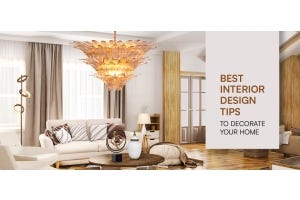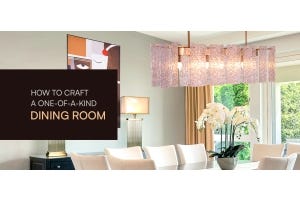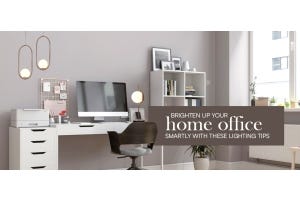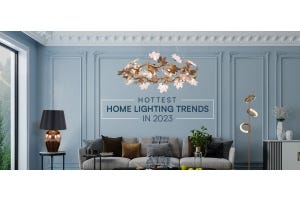The Ultimate Lighting Guide For Your Home
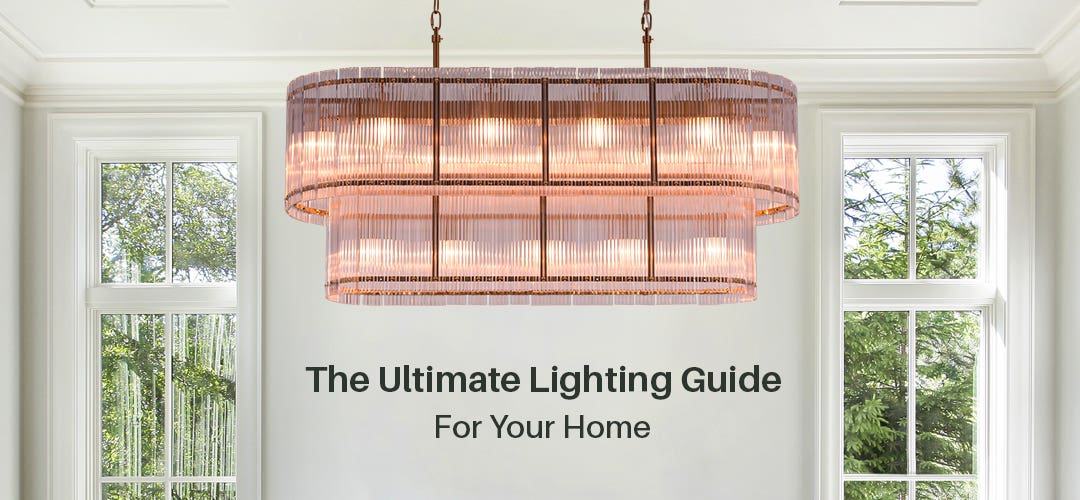
Planning the lighting layout for your home is not an easy feat. Lighting is unarguably one of the most important elements to focus on, but you need to get everything in place before you can get going with the lighting part. There’s designing the space, giving the right colours and accents to the space and the lighting basically adds a flawless finishing touch to your home. Lighting is an afterthought in our interiors, which is sometimes quite evident in how we go about things. You need to plan a lot of things before making the slightest addition or changes to your lighting layout, as they can affect the aura of your space.
The White Teak Company brings you an ultimate lighting guide that can help you turn your living space into your dream home. Lighting is just as important as any other element that goes into your home, and there are many intricacies that are involved in getting your lighting layout right. Now, sit back and take a look at all the things you will need to think about before finalising the lighting designs for your home.
1. Pick the design language or theme that resonates with you
Choosing the design language, theme or the genre of the lighting fixtures early on will not only save you time but also let your planning process be pretty well defined. Now, the key here is not to randomly pick a design that you find visually appealing. Your decor is basically a reflection of your personality, and you should go overboard with all the designs that totally resonate with your mind.
It is not every day that you design your space or give it a makeover, so make it count when you do. There are many options out there that you can go for, depending on your preference. If you are into a classy or elegant decor, then go for designs with a modern touch. If you love living in the moment or keeping ahead of the times, then contemporary or minimalist designs are what you’re looking for. If designs from the 70s or 80s excite you, then you can go with retro decor. You will find multiple design languages like these that have distinct characteristics to bring the best out of your decor.
2. Go with layered lighting to add depth to your space
Layered lighting is an essential lighting concept that is often overlooked. Before going further, you need to understand the basics of layered lighting. Lighting works best in your living space when it’s used in layers. The three elements of layered lighting are - ambient, task, and accent lighting, and each of these elements comes with its purpose.
- Ambient lighting - This part of layered lighting gives your space general or soft lighting. The overall illumination gives your home uniform lighting and sets the tone of the space too.
- Task lighting - This part of layered lighting offers very focused and intense illumination for you to carry out any detailed task work. Task lighting is much brighter compared to ambient lighting.
- Accent lighting - The last part of layered lighting is ideal for highlighting any specific area or object in your home. Accent lighting creates stunning focal points creating stirring visuals in your space.
Now that you are familiar with this lighting concept make sure that your lighting designs are perfectly balanced no matter which space you’re starting with. Ideally, every part of your home should follow the layered lighting concept to maintain uniformity throughout. Layered lighting not only adds an exceptional functionality quotient to your space but also makes your decor much more aesthetically pleasing.
3. Don’t forget a statement piece for the space
A statement piece is usually the lighting design that stands out in your decor either because of the unmatched visual appeal or the visibility from other spaces too. You may question why a lighting design that outshines the rest of your decor is necessary, but there’s nothing like a statement piece that defines your space and sets the tone for your decor. If you’ve already finalised the design language, as we mentioned earlier, you shouldn’t face any trouble in choosing the right statement piece for your space. Usually, a statement piece is a larger-than-life chandelier, pendant light or ceiling light, but current trends are in favour of going with a statement piece that’s not an overhead highlight.
4. Bespoke lighting layout for each space
It’s quite obvious that you can’t use the same blueprint to design the lighting layout of each room. You’ll have to go with a specific design for each of the spaces in your home. Since this might be the first time you are thinking about this, we have some standard layouts you can take inspiration from. Feel free to add your touch with any element you like.
- Foyer - Your entryway needs to give an insight into your decor, and that’s why you can let it be as dramatic as you want it to be. A chandelier or a pendant light can be your primary lighting design in the space, while a sleek floor lamp or wall light complements the lighting.
- Living room - Be as creative as you can get with this space. Your statement piece can be included here, and you can go with a floor lamp or table lamp to balance the lighting in the space.
- Dining room - The heart of your home, this place deserves some depth and drama too. Track or recessed lighting would be just perfect for the space, making it functional as well as aesthetically pleasing. Complete the look with a floor lamp.
- Kitchen - You need this space to be as functional as it gets. You can start with track lighting and cover the missing spots with pendant lights or get floor lamps to accentuate the look too.
- Bedrooms - This is completely your space, and you’ll want it to be as cosy and warm as possible. Pendant lights or chandeliers can be the perfect overhead lighting fixtures, while bedside table lamps are a must.
- Office or Study - You’ll need an overhead lighting design like a chandelier, pendant light or a ceiling light as the primary source. The secondary source can be anything like a table lamp, floor lamp or wall light.
- Bathroom - One of the most ignored spaces when it comes to lighting. While functionality is key here, you can make this space quite visually pleasing too. A pendant light, flush-mounted ceiling light or a wall light should do the trick here.
5. Measure the space properly before going for a lighting design
The issue with a big lighting design is that it takes up a lot of space and becomes way too loud for comfort in decor. And you don’t want a glaring lighting design bothering you all the time you spend in that particular space. While pendant lights and ceiling lights will never be trouble, you’ll need to be careful with chandeliers. If you want to understand the best way to choose a chandelier for your space, click right here.
6. Multi-functional lighting is the way ahead
The best lighting designs out there are the ones that offer the best blend of convenience and innovation. The more versatile your lighting designs are, the better. Dimmable lighting fixtures have taken the design space by storm, and they not only come with exceptional functionality but also offer great ease of use. Lighting designs with dimmable LEDs can bring the best out of decor in more ways than you can imagine. You can not only customise every occasion but change the lighting according to your mood too.

